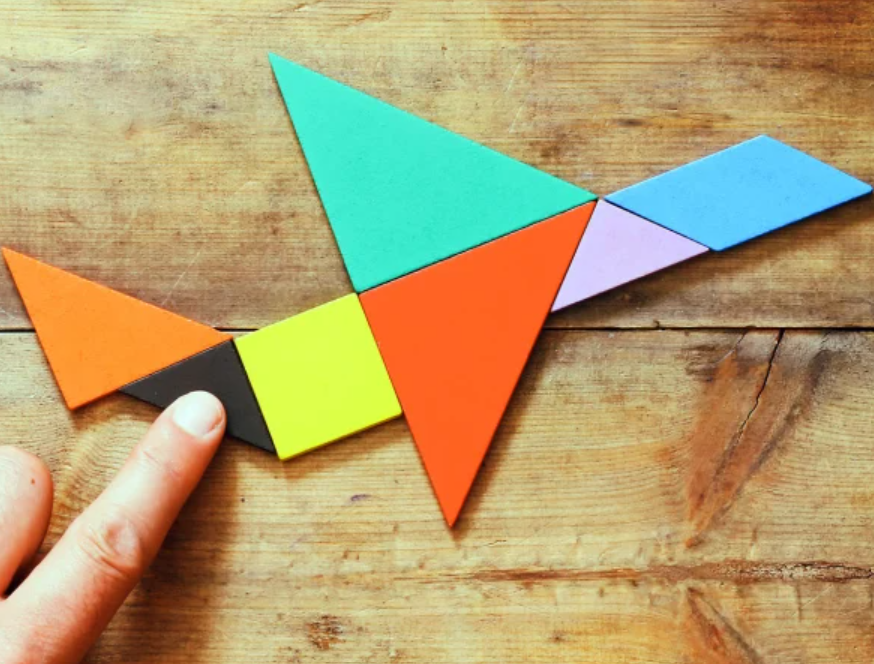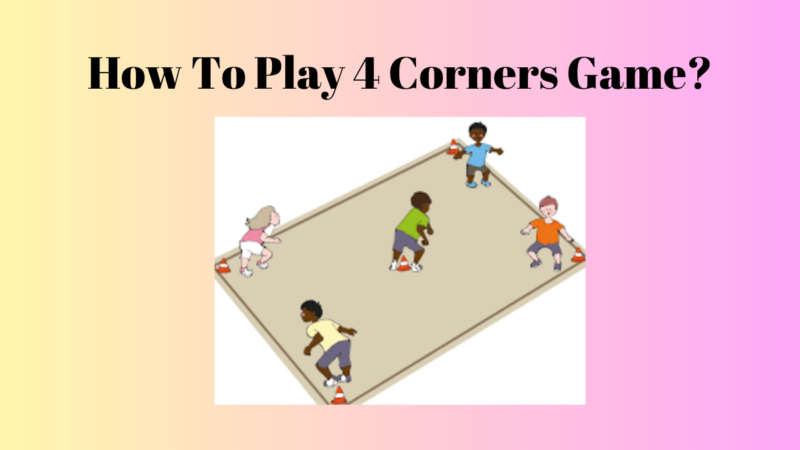Math and Tangram Puzzles: 14 Things to Think about (Relation, Practicality)

It’s lovely that tangram puzzles may be used for fun and learning. The seven puzzle pieces come from a larger square and may be rearranged in countless ways to create various puzzles. Following rules is essential to solving a tangram problem, adding to the game’s complexity and appeal.
Since tangram puzzles are constructed from smaller pieces formerly part of a more significant component, they fall under dissection puzzles. Everyone may join in, and everyone can take something away from them. According to the research, children may benefit from these problems, particularly when they begin to grasp the fundamentals of mathematics. Let’s continue to discover the rest.
Gain Knowledge about Geometric Forms.
Learning about shapes is crucial to a child’s foundational math education. The shapes in tangram puzzles might serve as building blocks for a child’s early education. The tans are often colored, with red, blue, green, and yellow being the most prevalent hues. Children are more likely to remember and comprehend the shapes they’ve seen if they’ve been incorporated into something they like. The first steps in teaching geometry might be as elementary as showing students how to draw a square or rhombus. Begin by joining two forms, then scale up to using all seven tans.
Grasping advanced mathematical ideas
Complex mathematical ideas of varying degrees of difficulty are reflected in tangrams. Topics like determining the area or perimeter of a form, congruence, fractions, and geometry fall under this category.
One of the requirements of tangram puzzles is that each tan must have a side that touches another tan. Mathematics teachers may use this graphic representation of fractions to better explain the concept to their students. The advantages of solving Tangrams are its seeming simplicity and the ease with which children may pick them up.
Read More – How To Play Jacks?
Analyze Critically
The seven Tans in a tangrams puzzle allow for infinite possible configurations. A puzzler’s mind is jolted, and their critical thinking abilities are developed as they go from more accessible to more challenging riddles.
Researchers have shown that solving Tangram puzzles helps youngsters’ brains develop, particularly in mathematics. Allowing the kids to experiment, play with, and make versions of the seven tans is as beneficial to their development as helping them solve the riddles.
Realizing How Students Think
As all good educators know, the most crucial component of incorporating these kinds of activities into classrooms is having students explain their thought processes. Tangrams provide an excellent opportunity for children to articulate their thoughts in a relaxed and enjoyable setting.
Solving a maths issue often involves going through many stages. When your students can answer math problems without thinking about it, you’ve accomplished half of your job as a math instructor. A teacher might help pupils develop this ability by soliciting explanations for their work.
Tangram geometry
Simple geometric concepts are crucial to solving tangram puzzle problems. The beauty of mathematics is that it allows you to build on your foundational knowledge while being grounded in the fundamentals. Kids learn about the building blocks of geometry and how they can be used to create new forms. When things become complicated, it helps to go back to the fundamentals.
These geometric concepts may also be introduced in different ways. Tans help children visualize basic geometric figures. Understanding and interpreting limits is shown by the capacity to fill these borders with forms, which are all different colors.
Ability to See and Think Globally
Strong visual-spatial abilities require an intuitive grasp of spatial relationships and an active “mind’s eye” to visualize and manipulate things. The ability to recognize gaps in knowledge and fill them in mentally before committing them to paper is an invaluable talent, particularly in mathematics. Pattern recognition, formation, and solution all benefit from this ability.
Read More –Bananagrams Rules: The Ultimate Word-race Game
A young solver of the tangram
By mentally visualizing the seven tans and then translating them into the shape of a problem, solving tangram puzzles is a great way to hone one’s visual-spatial abilities. Changing the shapes’ vectors is also part of this manipulation.
Convex Figures and Tangrams
Any shape with inner angles of fewer than 180 degrees is considered convex. Tangram puzzles have an intriguing property in that, upon solving the outlines, it becomes clear that they are all convex polygons. Each one of the ties is right angles.
Children Can Develop a Favourable View of Mathematics.
Surely you have heard the adage, “Math is hard.” This observation was likely made due to the widespread perception that Mathematics is a grave and challenging topic.
Games like tangram puzzles that break down complex mathematical concepts into their simplest forms might help pupils have a more positive outlook on the subject. Their approach to learning the material strongly influences a student’s level of success in a challenging topic like mathematics.
Putting Joy into Math
Maths may be more enjoyable with the help of puzzles like Tangrams. Many students like the lesson and look forward to attending each week. It’s a great approach to get their minds working and engaged before class, making the material easier to absorb. Making mathematics more enjoyable fosters a more optimistic perspective, making the topic more engaging.
Mathematical Problem-Solving Strategies
Maths is an excellent instrument for critical thinking, as previously mentioned. This talent pairs well with the ability to solve problems. As with every challenge, a tangrams puzzle begins with a basic diagram. Still, the complexity of these challenges rises with time, honing one’s problem-solving skills in the process. The ability to visually monitor information has opened up new avenues for problem solvers. People can now recognize patterns that may be used in various situations.
Acquiring Mathematical Jargon
Solving mathematical puzzles is a great approach to familiarise pupils with the language of mathematics. Beginning with the many names of the forms that make up the seven tans—”parallelogram,” “rhombus,”…—these are excellent methods of assisting pupils in determining the proper naming of things.
These games are a great way to ease kids into learning about concepts like congruence, rotation, and symmetry. Students’ ability to use the appropriate vocabulary strongly indicates their academic development.
Read More –Do Players Wear Metal Cleats In Soccer?
Ability to Rotate in Space
To complete a tangram puzzle, one must be able to rotate shapes such that they conform to a predetermined pattern. The ability to rotate one’s perspective in space is what we call it. The first step in solving a tangram problem is having a clear mental image of the puzzle and knowing where each of the seven tans goes so that the completed puzzle follows the given design and adheres to the given constraints.
Improved spatial rotation abilities help with Tangram solutions and general problem-solving as the difficulty of the puzzles rises. Students get an understanding of the impact of both rotation and translation on forms.
Drawing, Mathematical Modelling, and the Use of Tangrams
Tangrams are a great way to get students comfortable with both sketching and mathematical modeling. The tangram puzzles may be made quickly and easily, with various variations. Teachers may include modeling into their curriculum by having students create their drawings of the puzzles and outlines to complete. The tans also have rules that must be followed if you want your work to be valid so that you may use this as a lesson on the need for precision in mathematics. Important to modeling are the many shades of tan.
Tans help determine the relationship between area and perimeter
You may use tangrams to show how area and perimeter are related without using mathematics. This may be done quickly and easily by counting squares. Finding the area is much simpler after discovering the perimeter. Therefore this is yet another example of problem-solving abilities. In higher-level courses, students use tans for more complex formulae, such as those using the Pythagorean Theorem or algebraic expressions.
Conclusion!
Maths may be intimidating for young minds, but dissection puzzles are enjoyable and engaging. They are also an excellent opportunity to encourage youngsters to study at their own pace and style. You’ve already accomplished plenty if you can pique a student’s attention. When moulding a child’s perspective, tangram puzzles are invaluable, particularly in challenging subjects like STEM.
The wonderful thing about tangram puzzles is the many different ways they may be used. Mathematical and creative abilities are developed, including generating new iterations of an outline for a problem.
Can you name the tangram’s seven shapes?
A Tangram consists of seven geometric shapes: a square, a parallelogram, two triangles of varying sizes, a square, and a tiny triangle.
Do you know what a tangram puzzle is?
A tangram is a two-dimensional re-arrangement puzzle invented in China over 200 years ago by slicing a square into seven parts, or “tans” (Slocum et al., 2003).
What are the five tangram pieces?
The Tangram square is a collection of seven geometric objects, including a square, a parallelogram, and five triangles (two tiny triangles, one medium triangle, and two big triangles).






